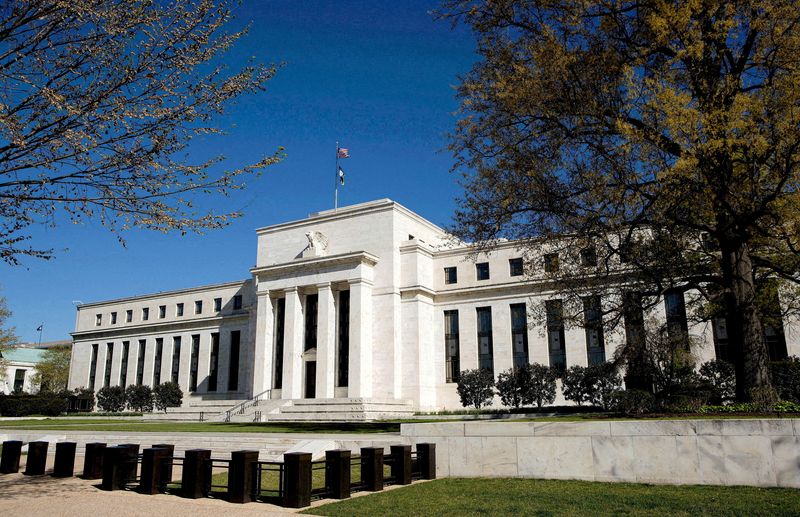Dollar down and oil slips as Fed readies rate cuts
By Tom Westbrook
SINGAPORE (Reuters) -Oil fell for a fifth day in a row on demand jitters on Thursday, stocks were subdued in Asia, and the dollar hovered near one-year lows as Federal Reserve minutes signalled that U.S. interest rate cuts are set to begin in a few weeks' time.
The minutes validated bets on a rate cut next month and said the "vast majority" of policymakers felt that if data came in as expected, a September cut was likely to be appropriate.
Oil prices fell, however, and at $75.97 a barrel, Brent futures were near the year's low, having lost nearly 6% in August so far as China's demand outlook weakens and looming rate cuts signal an expectation of a U.S. slowdown. [O/R]
Stocks, after a phenomenal rebound from early-month lows, were also kept in check, with U.S. and European futures down about 0.1%, and MSCI's broadest index of Asia-Pacific shares outside Japan mostly flat.
"The first 200 days following the first rate cut tend to be challenging for equities, because it signals a deteriorating growth and profits environment," said Nick Ferres, CIO at Vantage Point Asset Management in Singapore.
"The context is that the global risk proxy, the S&P 500 , is back near the all-time high and risk compensation is poor."
Trade was thin in China and major indexes notched small losses, with electric vehicle stocks wobbly on tariff risks. Hong Kong's Hang Seng rose 0.5%, helped by an 8% gain in shares of electronics maker Xiaomi (OTC:XIACF ) after upbeat results.
Surges in pharmaceutical firms Sumitomo Pharma and Chugai Pharm helped Japanese shares notch a three-week high in morning trade, as the market recovers from a stunning collapse in early August. (T )
"I think the market's focus for the equity investor is changing a bit recently," said Daiki Hayashi, head of Japan sales and marketing at J.P. Morgan in Tokyo.
"Investors had been buying Japanese equities because they were cheap. Now, recently, we have been having a lot of discussion about single stocks," he said.
"If we started to see more of a growth story for individual companies, we might see another increase in equity prices."
DOLLAR DOWNTREND
Rates and currency markets see a U.S. easing cycle as having further to run than other countries, since U.S. short-term rates are higher, and have pushed down U.S. yields and the dollar.
It also gives room for smaller markets to make cuts, and in South Korea, policymakers hinted at an October cut as they left rates on hold, as expected.
Treasuries rallied on Wednesday and ten-year yields were broadly steady at 3.80% on Thursday in Asia. Two-year yields held at 3.93%.
Interest rate futures markets have fully priced in a 25-basis-point cut in the U.S. next month, with a 1/3 chance of a 50-bp cut. They project 222 bps of U.S. easing by the end of 2025, against 163 bps for Europe.
The euro stood at $1.1144 in Asia, having touched $1.1173 on Wednesday, its highest since the middle of last year and above chart resistance at $1.1139, with the way open to the 2022 high around $1.1276. Sterling bought $1.3084 and hit a more than one-year high of $1.3119 on Wednesday. [GBP/]
"The unequivocal signal from the (Fed) minutes has been the catalyst for the latest leg down in the U.S. dollar," said National Australia Bank (OTC:NABZY )'s head of currency strategy, Ray Attrill.
"It is likely that the break above $1.30 on cable looks sustainable," he said, using a nickname for the sterling/dollar pair. "And similarly for the euro ... we're talking about potentially a $1.10-$1.15 range in coming weeks."
Checks on the dollar's weakness may come from U.S. jobs data on Sept. 6 or purchasing managers index (PMI) data due later today, if it confounds market bets on interest rate cuts, or shows softness in Europe that weighs on the euro, Attrill said.
Source: Investing.com
